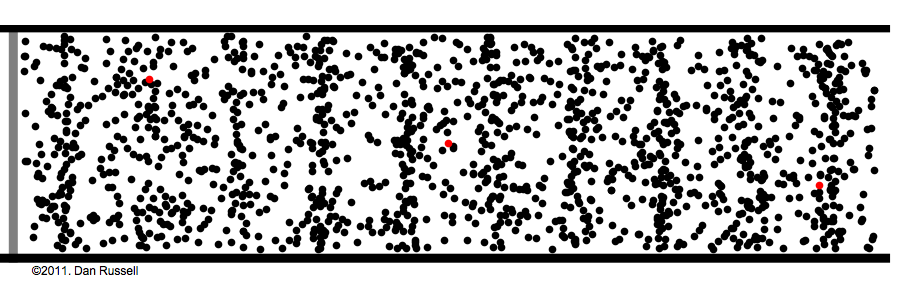A wave is
a kind of change that moves from one place to another.
· sound
· water waves
· electromagnetic waves
Longitudinal Waves
In
a longitudinal wave the particle displacement is parallel to the direction of
wave propagation. The animation at right shows a one-dimensional longitudinal
plane wave propagating down a tube. The particles do not move down the tube
with the wave; they simply oscillate back and forth about their individual
equilibrium positions. Pick a single particle and watch its motion. The wave is
seen as the motion of the compressed region (ie, it is a pressure wave), which
moves from left to right.
The P waves (Primary waves) in an
earthquake are examples of Longitudinal waves. The P waves travel with the
fastest velocity and are the first to arrive.
Transverse Waves
In a transverse wave the particle
displacement is perpendicular to the direction of wave propagation. The
animation below shows a one-dimensional transverse plane wave propagating from
left to right. The particles do not move along with the wave; they simply
oscillate up and down about their individual equilibrium positions as the wave
passes by. Pick a single particle and watch its motion.The S
waves (Secondary waves) in an earthquake are examples of
Transverse waves. S waves propagate with a velocity slower than P waves,
arriving several seconds later.
Electromagnetic Waves
Light,
microwaves, x-rays, and TV and radio transmissions are all kinds of electromagnetic
waves. They are all the same kind of wavy disturbance that repeats itself over
a distance called the wavelength.




No comments:
Post a Comment